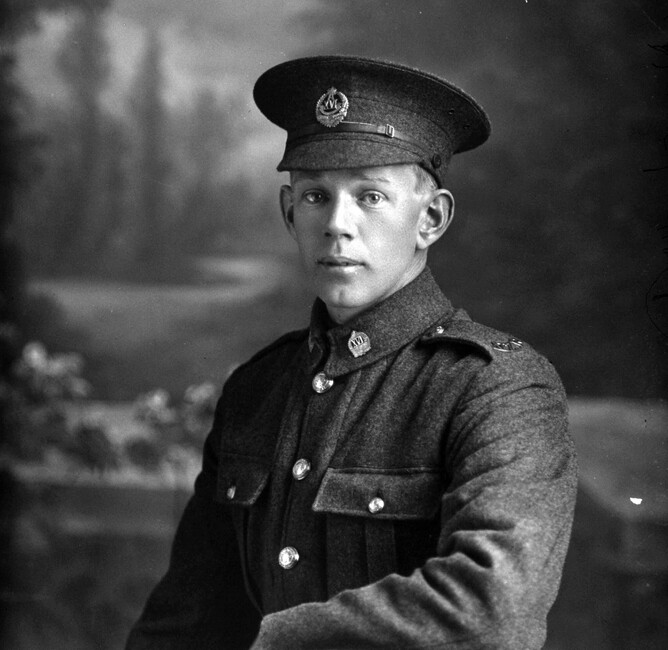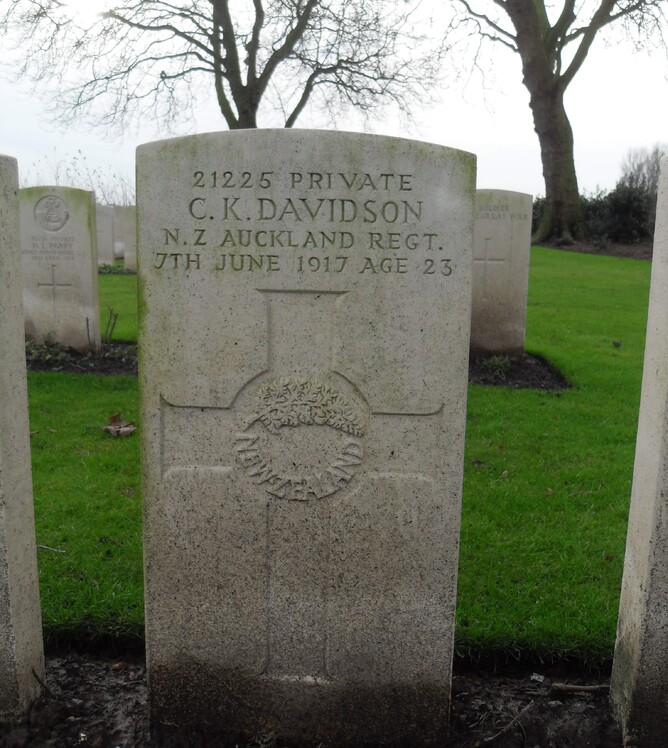Written by Elaine Mead -
France, 6 June 1917
“Dear Auntie, a few lines to let you know I am in the best of health, and also I received your ever welcome parcel, also Weekly News. Auntie the parcel was very much welcomed this time, as I am in the trenches and run out of fags. Things are pretty lively here the last few days. I tell you what you might do for me, write to mother and tell her I am well for it will be hard for me to get a letter away as often as I would like to.”
So begins a letter from a young soldier of the Auckland regiment of the New Zealand Expeditionary Force, written on the eve of the Battle of Messines in northern France. The Battle of Messines was one of three major offensive efforts on the western front, culminating in Passchendaele. Unlike that disaster of mud and slaughter, the attack on the Messine Ridge was a striking success. For two years, British and Australian tunnelling units, with help from some New Zealand infantrymen, had dug shafts under the German front line. These were used to explode 22 huge mines under the enemy positions at the beginning of the attack. Heralded by the awe-inspiring thunder of the mine explosions, the men of nine divisions set off forward at 3.10 a.m. on 7 June 1917.
In November, commemorative events around the world will occur on the "eleventh hour of the eleventh day of the eleventh month". At this moment, it will be 100 years since the armistice signed between the Allies of World War I and Germany at Compiègne, France and the end of hostilities on the Western Front of World War I.
Whilst the First World War officially ended with the signing of the Treaty of Versailles on 28 June 1919, it is 11 November – known variously as Armistice Day (UK), Veterans Day (USA) or Remembrance Day (informally as Poppy Day in the Commonwealth) – which has been adopted to mark the end of “the war to end all wars”. Sadly, a prediction which did not hold true and annual 11 November observances honour all armed forces veterans and those who have died in the line of duty since 1918.
In the last four years there have been many events and exhibitions to mark a century since various milestones of the First World War, both historical and personal. New Zealand men, young and old, eager for adventure or to do their bit for ‘King and Country’, marched through towns and cities to embarkation ships which took them to the other side of the world. Thrust in to the grim reality of war their stories were captured in photos, letters, journals, newspaper reports and in the scars, both physical and mental, brought back home with them. The impressive Wellington-based exhibitions of this period – ‘Gallipoli:the scale of our war’ (Te Papa) and ‘The Great War Exhibition’ (Dominion Museum Building) reveal very personal perspectives of such an experience.
The first flowers to bloom in the churned up earth of the Western Front battlefields were red field poppies, immortalised in the poem "In Flanders Fields" written by Canadian physician Lieutenant-Colonel John McCrae and adopted as a symbol of remembrance in the Allied countries.
In Flanders fields the poppies blow
Between the crosses, row on row,
That mark our place; and in the sky
The larks, still bravely singing, fly
Scarce heard amid the guns below.
We are the Dead. Short days age
We lived, felt dawn, saw sunset glow,
Loved and were loved, and now we lie
In Flanders fields.
Take up our quarrel with the foe:
To you from failing hands we throw
The torch; be yours to hold it high.
If ye break faith with us who die
We shall not sleep, though poppies grow
In Flanders fields.
Our young soldier’s letter continues….“Well I don’t know how long it will be before I get any leave, I think a long time anyway you can rest assure if I get a single chance I will pay you a visit. Give Ken and all the rest at home my best love and accept the same for yourself. Au Revoir.
I remain, your loving nephew
xxxxxxxx
The young man did not get to pay the promised visit. He was killed in action the next day, during the early morning assault and now lies in Wulverghem-Lindenhoek Road Military Cemetery, Belgium, along with 1,000 comrades in arms. He was Charles Kenneth Davidson, service number 21225, a Private in the 15th Company, 2nd Battalion, Auckland Regiment, N.Z.E.F. who died age 23 on 07 June 1917. He was the eldest and had four brothers and a sister, the youngest. His mother was so heartbroken she died five months later. He was my mother’s uncle, my great-uncle and at “the eleventh hour of the eleventh day of the eleventh month” my mother and I will wear a poppy and join thousands of others at one of the many Armistice commemoration events to remember him.
“Lest We Forget”


